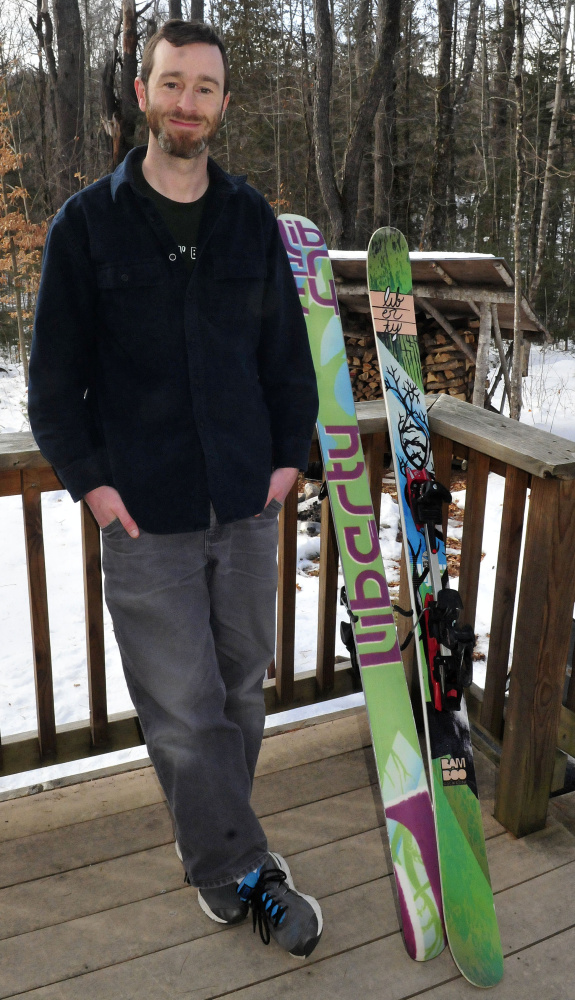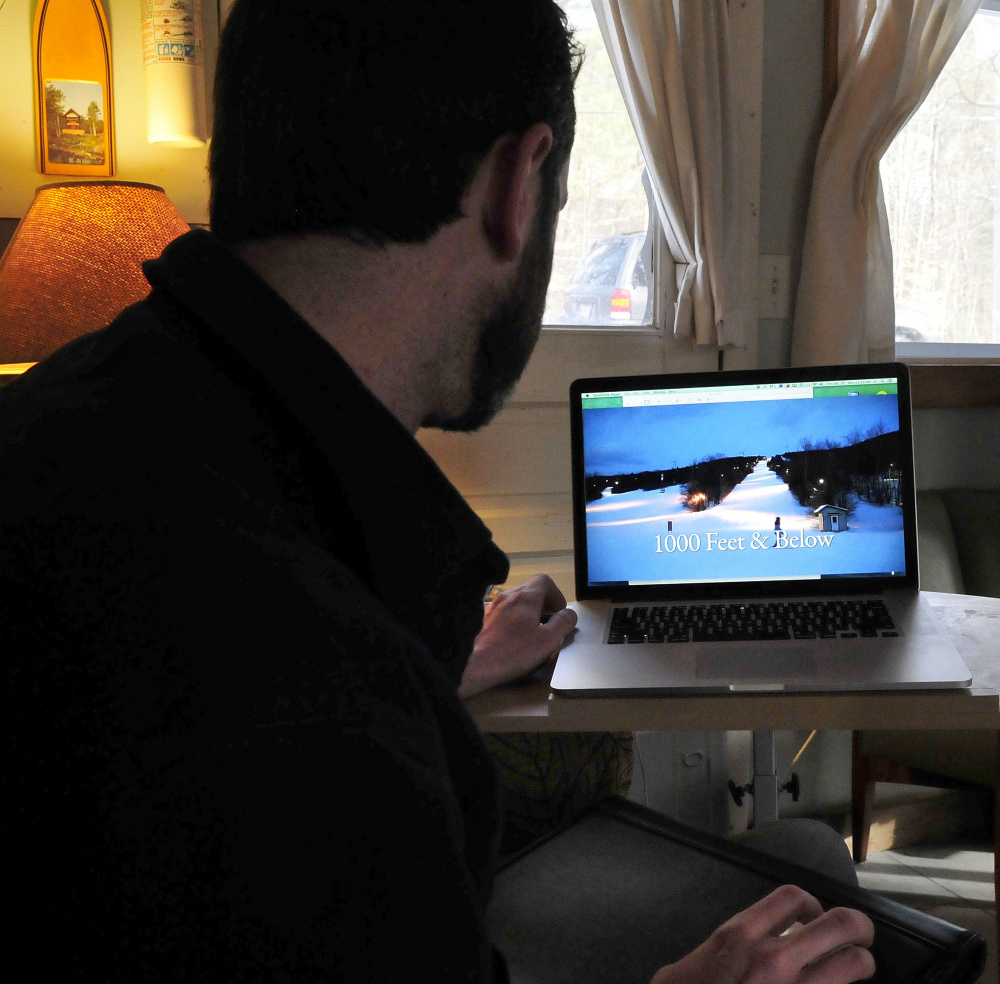NEW PORTLAND — Joel Osgood’s new documentary, “1000 Feet and Below,” is a nostalgic look at Maine’s lesser known ski hills, which are slowly disappearing. It’s also a warning that, without community involvement, the state’s smaller ski areas could all be gone.
Not long ago in Maine there were 135 smaller mountains – 1,000 feet and below in elevation – with some sort of mechanical lift where families got together to slide on the snow, visit together and eat hot dogs in the ski lodge, according to Osgood. Today there are 14 small ski areas left and it’s time for action, said Osgood from his tiny A-frame home on Bog Road in New Portland.
The 27-minute documentary, made over the past four years at small ski hills such as Titcomb Mountain in West Farmington and Baker Mountain on U.S. Route 201 in Moscow, will premier at 6 p.m. Wednesday at The Rack barbecue and brewpub on Sugarloaf Mountain. Admission is free.
To make the movie, Osgood visited several of the state’s lesser-known mountains to interview hill owners, lift operators, volunteers and skiers.
“There’s so much passion for it. It’s in trouble if we don’t fix it,” he said of keeping Maine’s small ski areas alive. “Every person I talk to, I got to the question asking them about their memories – when I was a kid I have these little snapshot memories – tell me about your experiences growing up at this place, and their faces just light up.
“It’s a community action piece wrapped in a rope tow.”
Osgood is by profession a gaffer doing lights, camera work and electronics for television and videos. He lives by himself in a 1969 camp he now calls his hamp (home and camp) next to Clark’s Brook about 30 miles north of Skowhegan. An 18-by-12-inch Waterford wood stove heats the whole place, including a loft.
In fact, he said, when he moved in 10 years ago, he built a ladder for access to the loft using local maple saplings. When he finished the ladder, he said he decided to stay and quit his job in Portland.
“That was the first thing I built the weekend I bought the place,” he said. “I went back to my job on Monday and I quit. I needed to be here full time.”
Osgood said the idea for “1000 Feet and Below” began five years ago when he visited Maine Mountain in Island Falls in Aroostook County, a ski hill he went to often as a boy. The ski area was gone and the trails were grown over.
He said the small ski mountains that are left – including Pinnacle Ski Club in Pittsfield, with its 150-foot rope tow – are affordable for families and offer a place to meet during the long, cold winter months and re-engage as a community.
A typical year at a small mountain ski area can cost a family $60 in membership dues, a far cry from the prices paid at Maine’s popular resort mountains where a family can easily drop $500 for a day of skiing, Osgood said.
“It’s pricing people out. This is a lot of the stuff discussed in the movie,” he said. “It’s making them feel like they’re out of place, and so they’re not getting into the sport. In order for the sport of skiing in order for it to survive, you need these places.”
Osgood, who graduated from Freeport High School and Syracuse University, said there’s a different dynamic that happens at the smaller ski hills in Maine. Everything slows down, he said, leaving the fast-paced commercial resorts behind. Small mountain ski areas are places where relationships are established and rekindled each winter, he said.
“It’s an environment that fosters better community action, community spirit,” he said. “What happened to the hills? What happened to the communities? They’re gone. When these hills go away, that community spirit goes away as well.”
He said it’s possible to embrace the modern world of mobile devices with the traditional thrill of being outdoors in the winter ripping jumps and skiing powder.
The answer is to reinvest in the sport and in the community, Osgood says in the film.
“We’ve got to keep these smaller hills around,” he said. “It’s a warning about our communities and where they’re going if we don’t reinvest locally in our own people. Go to your VFW hall, go to your kids’ plays, talk to people in the grocery store. Go to these small hills.”
Osgood said Maine Public Broadcasting stations have expressed interest in airing the documentary. He said he also will distribute the film digitally and via social media in the hope that people will start sharing it.
“The goal is getting the most eyes on it as possible,” he said. “I tell the story of the hills, but I hope that what people take away is that there are meaningful and positive things that can happen when we get to know the people around us.”
Send questions/comments to the editors.




